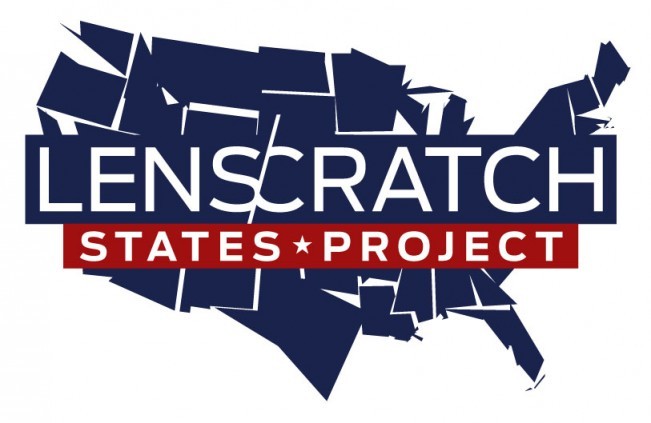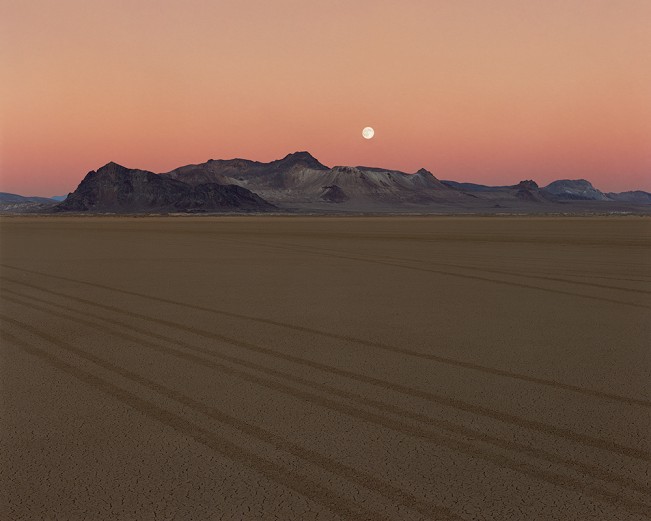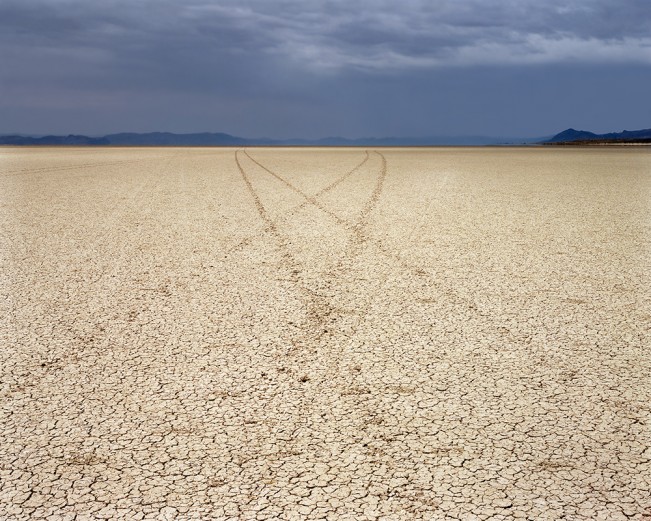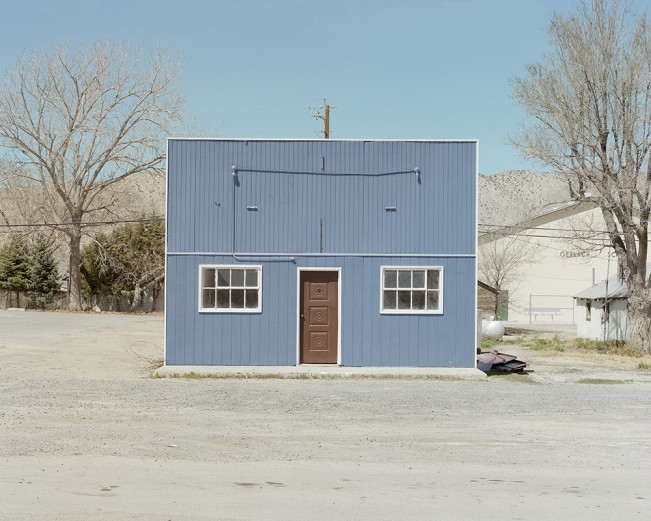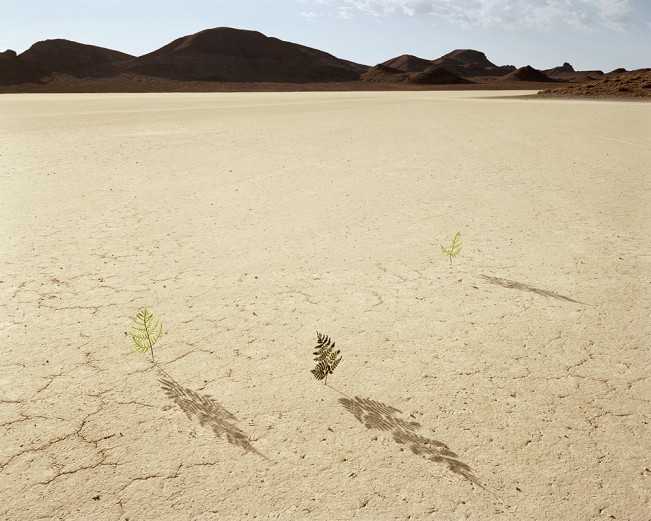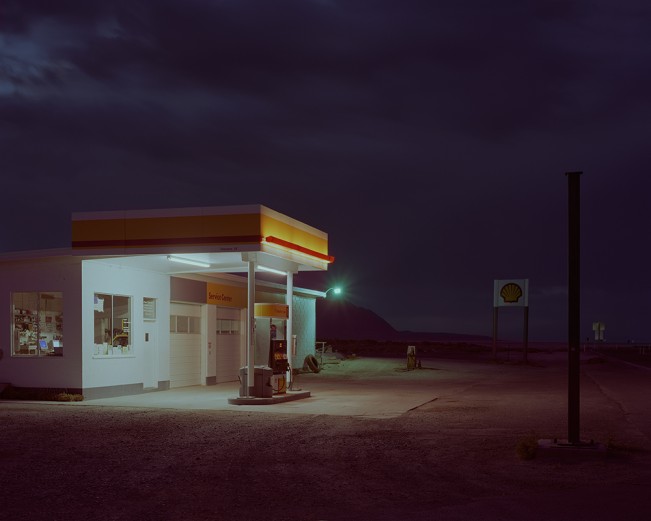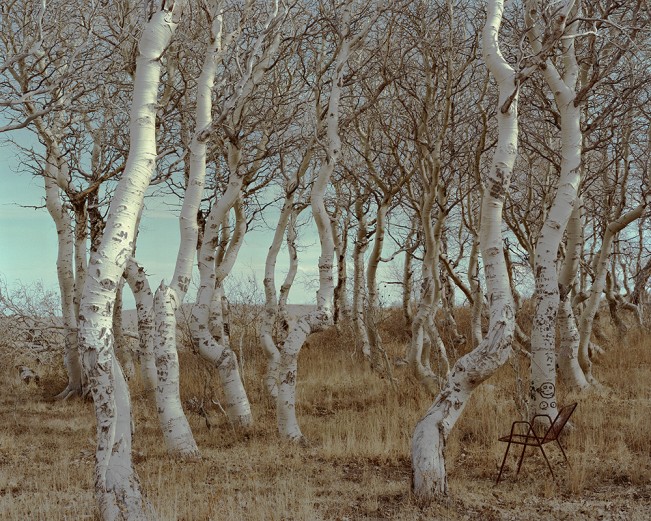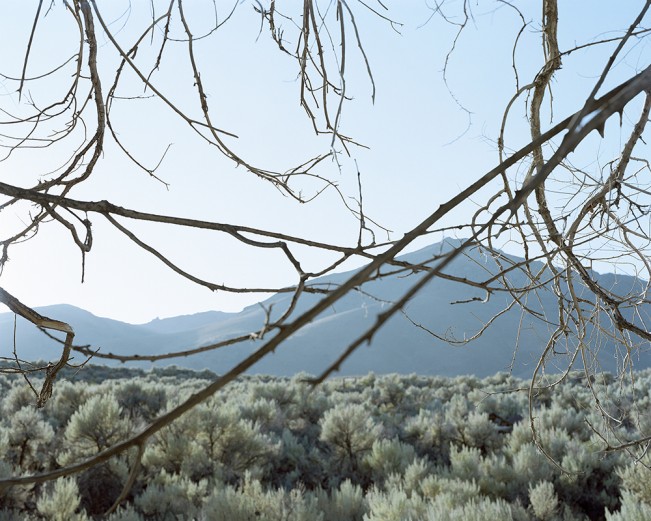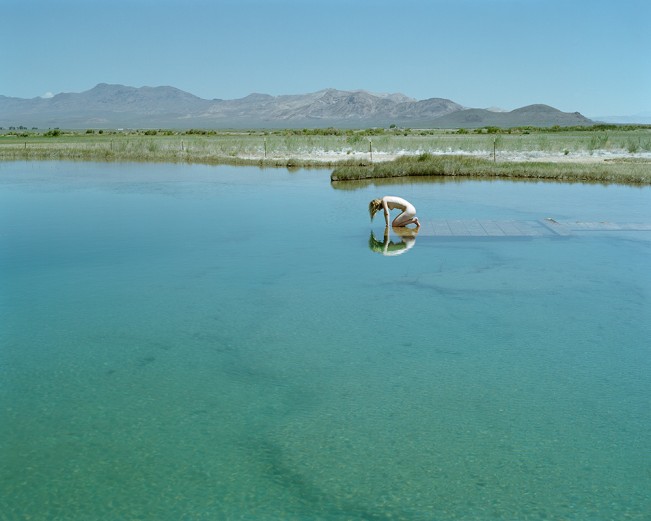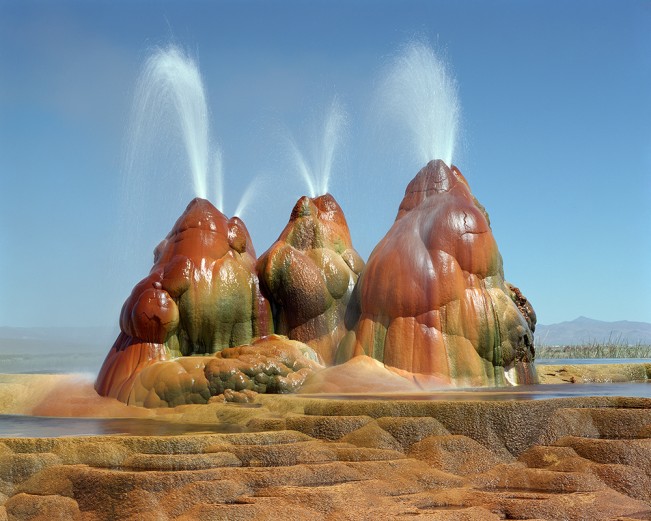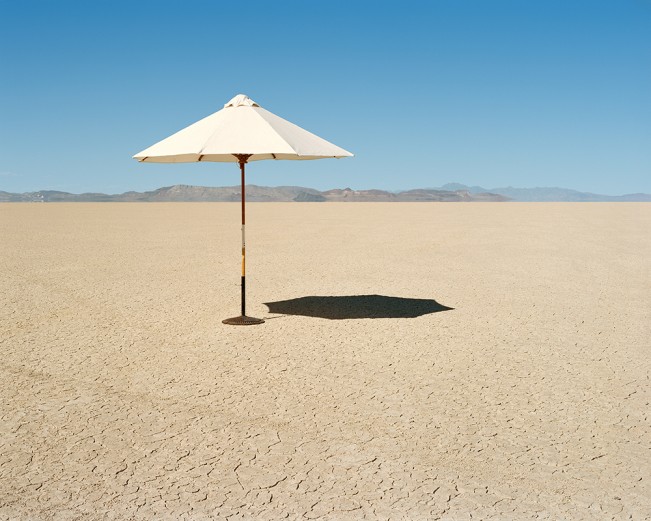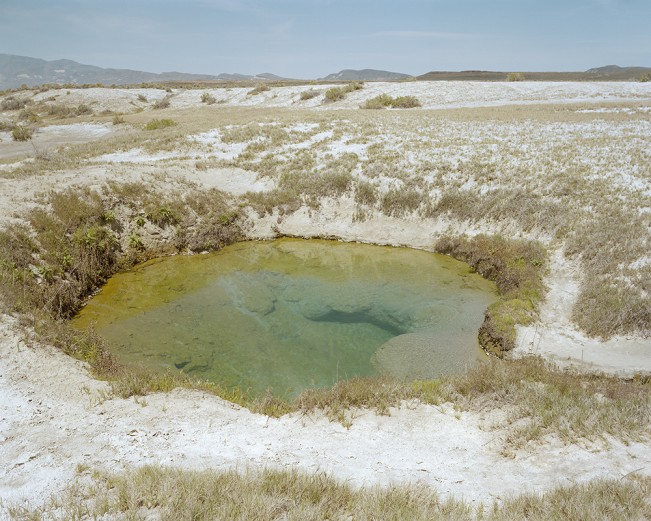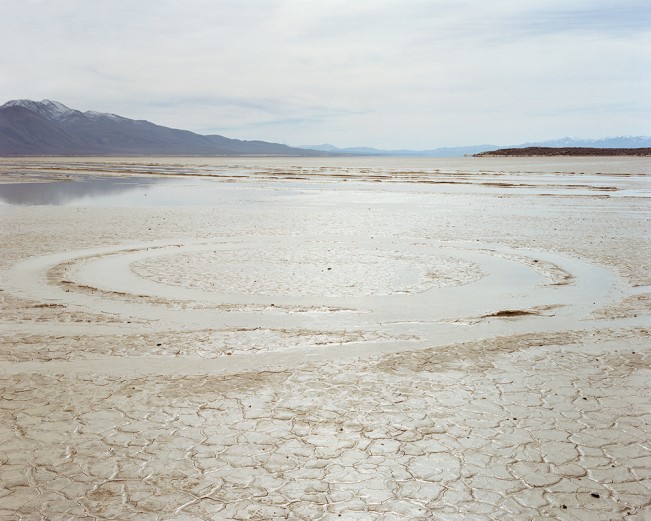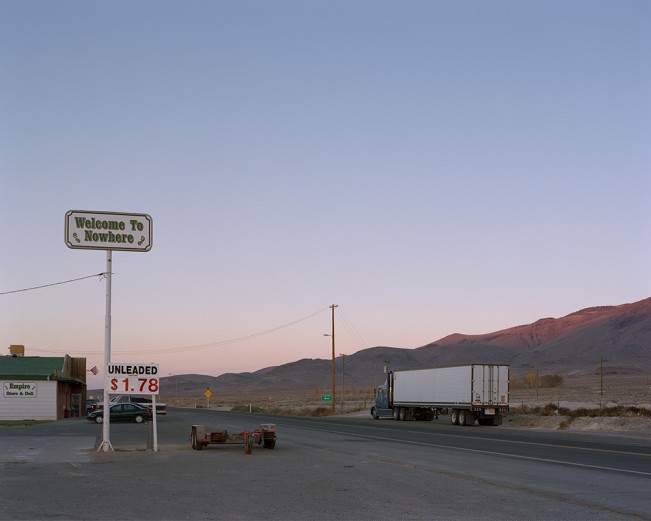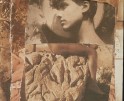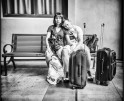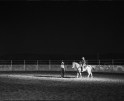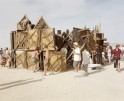Peter Goin: States Project: Nevada
Peter Goin is an American photographer best known for his work within the altered landscape. His work has been shown in over fifty museums nationally and internationally and he is the recipient of two National Endowment for the Arts Fellowships. Goin is currently a Foundation Professor of Art in Photography and Videography at the University of Nevada, Reno. He has over 17 published books under his belt and is currently working on another book project.
Peter is the author of Tracing the Line: A Photographic Survey of the Mexican-American Border (limited edition artist book, 1987), Nuclear Landscapes (The Johns Hopkins University Press, 1991), Stopping Time: A Rephotographic Survey of Lake Tahoe with essays by C. Elizabeth Raymond and Robert E. Blesse (University of New Mexico Press, 1992), and Humanature (University of Texas Press, 1996). He served as editor of a fifth book, Arid Waters: Photographs from the Water in the West Project (University of Nevada Press, 1992). Peter is also co-author of numerous books, including the Atlas of the New West, a collaborative effort with members of the Center of the American West at the University of Colorado at Boulder; A Doubtful River (University of Nevada Press, 2000) a project that examines the complex watershed of the first federal irrigation dam, the Newlands Project; and, Changing Mines in America (Center for American Places distributed by the University of Chicago Press, 2004) reinterpreting the legacy and importance of mining landscapes throughout the United States. In 2005, Peter and Paul F. Starrs served as co-authors of the seminal BLACK ROCK (University of Nevada Press), a dedicated investigation of a phenomenal desert region in northern Nevada. Peter’s photographs have been exhibited in more than fifty museums nationally and internationally, and he is the recipient of two National Endowment for the Arts Fellowships. Peter’s video work has earned him an EMMY nomination as well as the Best Experimental Video Award at the 2001 New York International Film & Video Festival. At the turn of the new century, Peter was awarded the Governor’s Millennium Award for Excellence in the Arts.
In fall of 2009, the Black Rock Institute Press published the Fine Art limited edition, slip-cased book titled Nevada Rock Art, Peter’s focused study on Nevada’s petroglyphs and pictographs. Reflecting his long-standing work studying Lake Tahoe, Peter was the author of South Lake Tahoe: Then & Now and co-author with Paul F. Starrs of A Field Guide to California Agriculture that won the J. B. Jackson Prize for publishing excellence (2010). Peter and Lucy Lippard coauthored Time and Time Again: History, Rephotography, and Preservation in the Chaco World (2013).
Black Rock
It was late afternoon and a ferocious wind blew. Dust devils swirled and danced before dispersing their sand and alkali debris over the dry lakebed. The bellows on my camera twitched in rhythm with the wind, and minute particles of dust seeped into every crack and crevice. On the horizon, large columns of dust obscured the volcanic rock outcropping. An ephemeral rain shower drizzled onto the playa, each drop exploding in a minute cloud of alkali dust.
The process of making these photographs has become for me a journey of rediscovery. Having spent more than twenty years traveling into the Black Rock, I have come to realize that this arid, often inhospitable, and unforgiving landscape possesses a character both spiritual and sublime. As these visitors from the Burning Man Festival soon discover, it is a land of contradictions that often defy description. The sound of quiet can be deafening. When the winds blow and the dust storms grow, even the most experienced traveler can become disoriented. Distances are deceiving as human scale becomes obscured and unpredictable. The smell of sage and hot-springs sulfur is woven together. The dirt roads are laden with silken dust; combined with water, they turn into quagmires of grease-like mud. The rocks are sharp and rough, yet in the soft evening light the distant hills appear covered with velvet. At any moment, there may not be one person within ten square miles, yet every step reveals human history. Mirages are common, and nothing really is what it seems. This is a landscape defined by the image and absence of water.
As the sun set on a moonless night, creating a balance between land and sky, the winds died down. I slipped into the dark, mirror-like water of the springs, and felt the hot, slippery mud ooze between my toes. The tall, green reeds at the pool’s edge obscured the horizon, and time, like a photograph, froze. The stillness made it hard to imagine the violent geologic forces that had shaped this range. After a few hours, my skin was wrinkled and I surrendered to the cool night air. Gathering my lawn chair, clothes, towel, and camera gear, I prepared to leave. A coyote howled, miles away. I located the Big Dipper and the North Star and noticed the crisp, ragged horizon line of the entrance to High Rock Canyon. In the lasting warmth, I realized once again how special, how human, how spiritual the Black Rock can be.
This book received an award ~ from the AAUP in the Trade Illustrated Book category.
Of all your photography projects, which one stands out the most for you and why?
Each project has its own merits and value in my memory…it’s really challenging to identify one, over another…remembering that I’ve completed 17+ books, not counting three oversized artist books in the collection of the Southeast Museum of Photography. A few of my projects were research publications — completed to test data, information, coalesce visual histories…and those do not have the same level of my own creative artwork, so there’s one distinction. I am very proud of my books, errors notwithstanding, and believe that through these projects I’ve been able to present a complex interpretation of that which we call “landscape.” Each project examines the paradigms of the human interaction with ‘nature’ from a different angle, point of view….
Having been though the process of publishing many books, from inception to sales, what do you feel is the most rewarding part of the process?
Seeing the finished book is the most satisfying feeling, deserving of celebration. After all, how many books can any of us produce in a lifetime? One, three, twenty? I’d have to say that the second most satisfying moment is finally receiving a completed, signed contract — more than not, that means that, yes, the work will be published! Of course, I always hope that there’s an audience for the analysis and views that I offer….
What advice would you give other photographers whose dream it is to have to have a monograph of their work?
It is definitely getting easier to self-publish a book, but the key is understanding that the peer review process, the editorial review process, and the collaborative efforts among the author, editor, and publisher are really what separates vanity publishing from the literature of the field…in other words, learn what a book is, buy and acquire other photographer’s work (I have a fairly large library myself), and commit yourself to actually getting a book manuscript completed. There are workshops, too, on how to prepare a book manuscript for review.
Linda: What motivates you to photograph?
On a very basic level, I am profoundly affected by the visual — by the way people organize and engage with their surroundings, and by the way we communicate so essentially through visual means. It is natural to communicate in complex ways through visual media.
Can you share with us about any upcoming new work?
I am working on a book project with the University of Arizona Press, co-authored with Peter Friederici, on Lake Powell viewed from the rubric of climate change; and then on two books, one co-authored with Paul F. Starrs, on the history of Lake Tahoe. The second volume focuses on an exhaustive rephotographic survey of the Lake. And, then, I am working on new video programs suitable for broadcast — these are experimental, creative documentaries…
Posts on Lenscratch may not be reproduced without the permission of the Lenscratch staff and the photographer.
Recommended
-
Jayna Conkey: States Project: NevadaOctober 24th, 2015
-
Heather Protz: States Project: NevadaOctober 23rd, 2015
-
Antonio Gomez: States Project: NevadaOctober 22nd, 2015
-
JK Russ: States Project: NevadaOctober 21st, 2015
-
Peter Goin: States Project: NevadaOctober 20th, 2015


